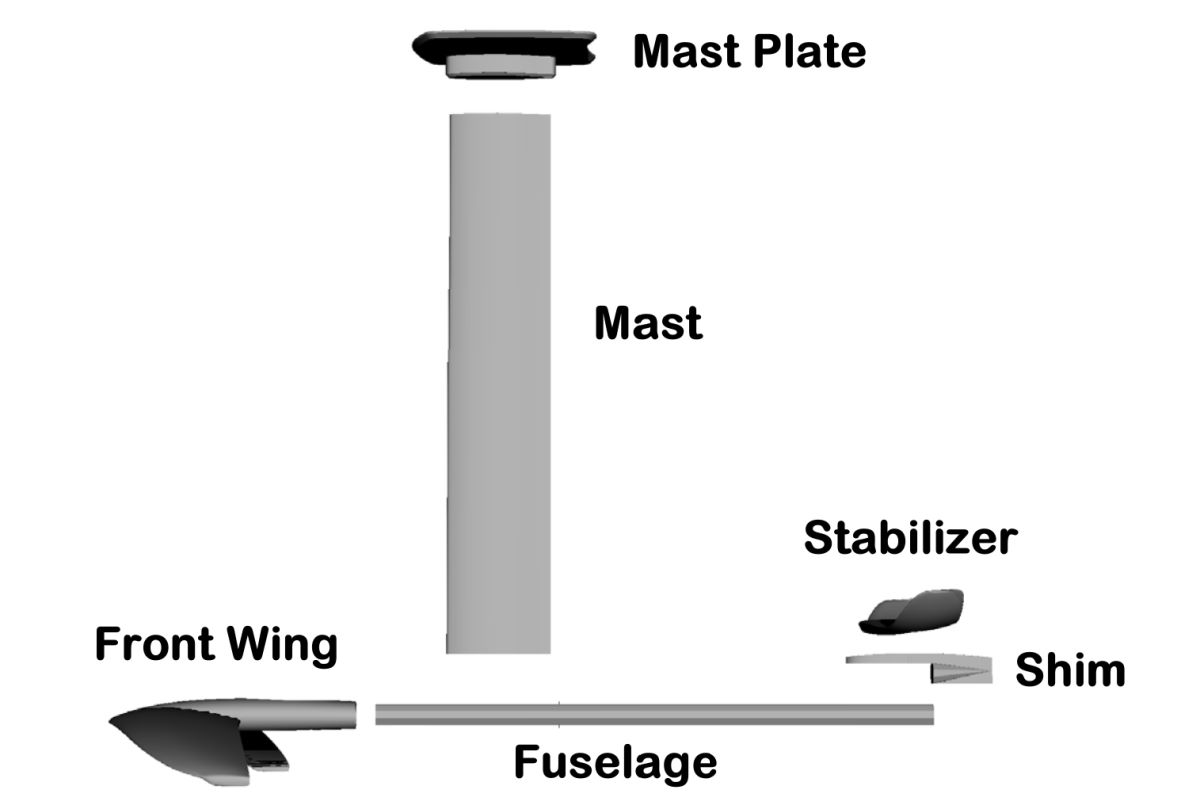Wake Foiling | Terminology Explained
The first time that you look at a hydrofoil, you may not realize that there's a lot going on underneath the surface of the water. Here, Cole talks about what each piece of the hydrofoil is called and what role each piece plays in your wake foil experience.

Mast Plate
The mast plate, or pedestal, is responsible for connecting the board to the rest of the foil. If you look at the mast plate, you will see that one side has a structure on it, and the other side is flat. The flat side of the mast plate connects to the boards and the other side connects to your hydrofoil.
Mast
Moving down from the mast plate is the mast. The mast is what makes it possible to hover above the water. A longer mast will allow you to get higher above the water than a shorter mast.
Fuselage
Connected to the other end of the mast is the fuselage, or "fuse" for short. The fuselage is going to determine how stable your hydrofoil is. If you have a shorter fuselage, it's going to be easier to pitch the foil up and down, which is going to make the foil more unstable and harder to learn on than with a longer fuselage. A longer fuselage makes it harder to pitch the foil up and down, which is going to make it more stable and easier for you to learn on.
Shim
Not all foils have a shim, but on Slingshot foils this shim goes on the back of the fuselage. It acts as a little pedestal for the tail wing of the hydrofoil, which we're going to talk about in a second. The shape of the shim can customize your ride by changing the pitch of the stabilizer.
Stabilizer
The tail wing of the hydrofoil, also known as the stabilizer, "stab", or rear wing, is exactly what's in the name: it is a stabilizer. It stabilizes how you fly through the water. Smaller stabilizers make it easier for the foil to pitch up or down which, as we just mentioned, is going to make it more unstable and harder to learn on. Larger stabilizers make it more stable and easier for you to learn how to ride.
Front Wing
Last, but not least, is the front wing. The front wing of the hydrofoil plays the biggest role in how the foil performs. Larger front wings are more stable and provide more lift, while smaller front wings are more nimble, but they're also a little less stable. Larger front wings also ride at slower speeds, while smaller front wings tend to ride at faster speeds.
Now you know exactly what each part of the hydrofoil is called and what it does. If you have any further questions, feel free to reach out to us at the shop. Until next time, happy shredding, and I look forward to seeing you on the water.
MACkite Subscription Links:
YouTube | Instagram | Spotify Oddcasts
Contact MACkite Below:
800.622.4655 | Kiteboarder@MACkite.com | LIVE Chat Messenger

Recent Posts
-
Kiteboarding | Crafting the Harlem Force Kite with Sustainability and Performance
Unparalleled Performance Meets Unmatched Sustainability The kiteboarding industry is on …24th Apr 2024 -
Duotone Ventis 2025 | What's New?
If you're familiar with Duotone's Ventis, you know its specialty is freeriding in light wind …23rd Apr 2024 -
Duotone Ventis D/LAB 2025 Overview
If you ride in an area with multiple light wind days and need a wing that'll let you get o …23rd Apr 2024




